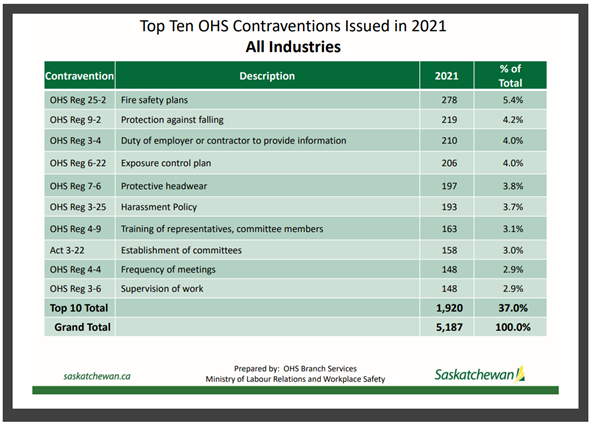A recent decision from the Fire Safety
Commission in Ontario highlighted several important points that are applicable
across Canada.
1.
The multitude of Codes, Standards, and Regulations can
create confusion about which regulations apply to a building or business.
2.
Being federally regulated does not exempt a company
from complying with provincial fire safety regulations.
3.
In cases of conflicting regulations, the more stringent
requirement prevails.
Case Summary: Transportation Company's Fire Safety Compliance Battle
A transportation and warehousing company that operates in Canada and the United States, appealed a fire inspection order issued by the local fire department. The inspection order required the installation of fire extinguishers on their forklifts, as required by the Ontario Fire Code. The company argued it was federally regulated and exempt from the provincial fire code requirements. The company believed that they were subject to the requirements of the Canada Occupational Health and Safety Regulations, which in this case they argued did not require the installation of fire extinguishers on forklifts.
Stringency Prevails: Fire Code Trumps OHS Regulation
The Fire Safety Commission ruled that the fire code requirements applied to the company’s privately owned building and confirmed the inspection order. The company was ordered to install fire extinguishers on each forklift within three months from the date of the decision.
Fire Safety Plans: OHS Regulations vs. National Fire Code
This case highlights a common issue – overlapping fire safety requirements. It’s important to identify the distinctions between the requirements outlined in various health and safety regulations and those in the fire codes. For example, in Saskatchewan, both the Saskatchewan Occupational Health and Safety Regulations and the National Fire Code mandate a “fire safety plan”. However, the specifics outlined in the National Fire Code differ from those in the OHS Regulations. Many fire safety plans complying with the OHS regulations do not meet Fire Code requirements. Compliance with one regulation does not mean compliance with the other.
Fire Safety Plan Discrepancies: A Closer Look
Continuing with the fire safety plan example, according to the Saskatchewan Ministry of Labour Relations and Workplace Safety, OHS Branch Services, the leading OHS contravention in 2021 was “fire safety plans”. Fire safety plan contraventions amounted to a total of 278 occurrences or 5.4% of the total of the top 10 contraventions.

It’s not evident whether these contraventions occurred in buildings also requiring a fire safety plan per the National Fire Code. However, many likely did, indicating continued non-compliance with Fire Code requirements for some of these companies. The issue I have found with this situation is that it becomes more challenging to obtain voluntary compliance once one governmental organization (OHS in this case) has “approved” the violation.
Collaborative Approach: OHS & Fire Code Professionals
In my opinion, when we make compliance with regulations too complex, we’re less likely to succeed. So, how do we collaborate as fire protection & life safety professionals and occupational health & safety professionals to address these overlapping issues?
I’m interested to hear about your experiences with conflicting Codes, Standards, and Regulations.
Contact me to find out more about these differences in fire safety plans to ensure you protect your people and property, and to ensure compliance with the fire code.
Here is a link to the full decision, fire safety commission decision and order.


One Response
Interesting.
Overlapping regulations are bad for everybody.
Requiring application of “most stringent” requirements is confusing for everybody and should be adressed firsthand by AHJ in the regulations themselves (as a whole), not left to interpretation by the users.